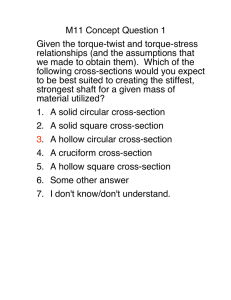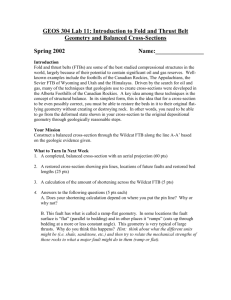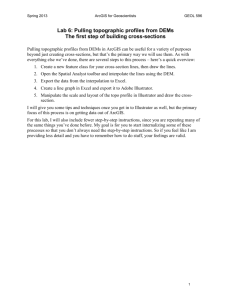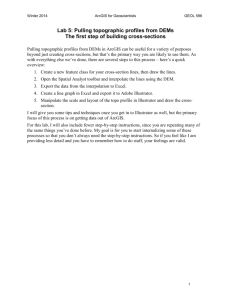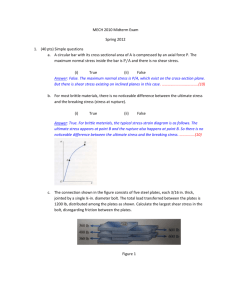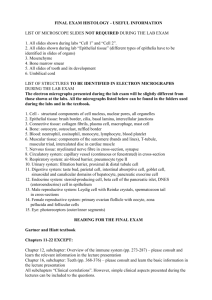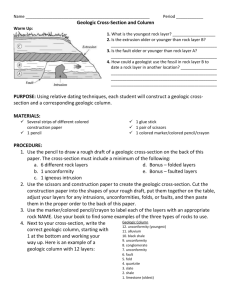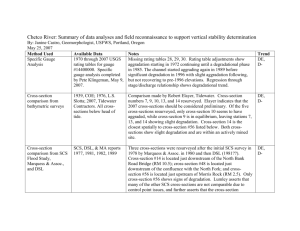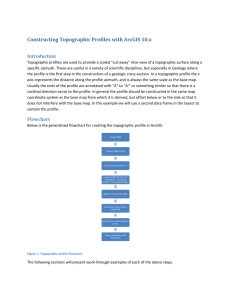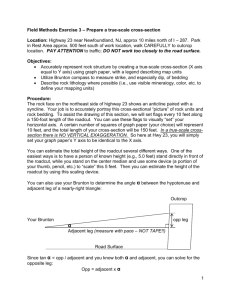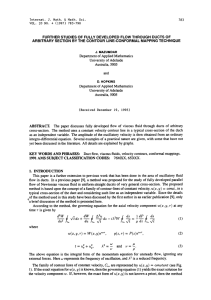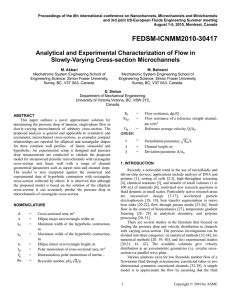A Cross-Section and Geologic History from Field Data Collected by
advertisement
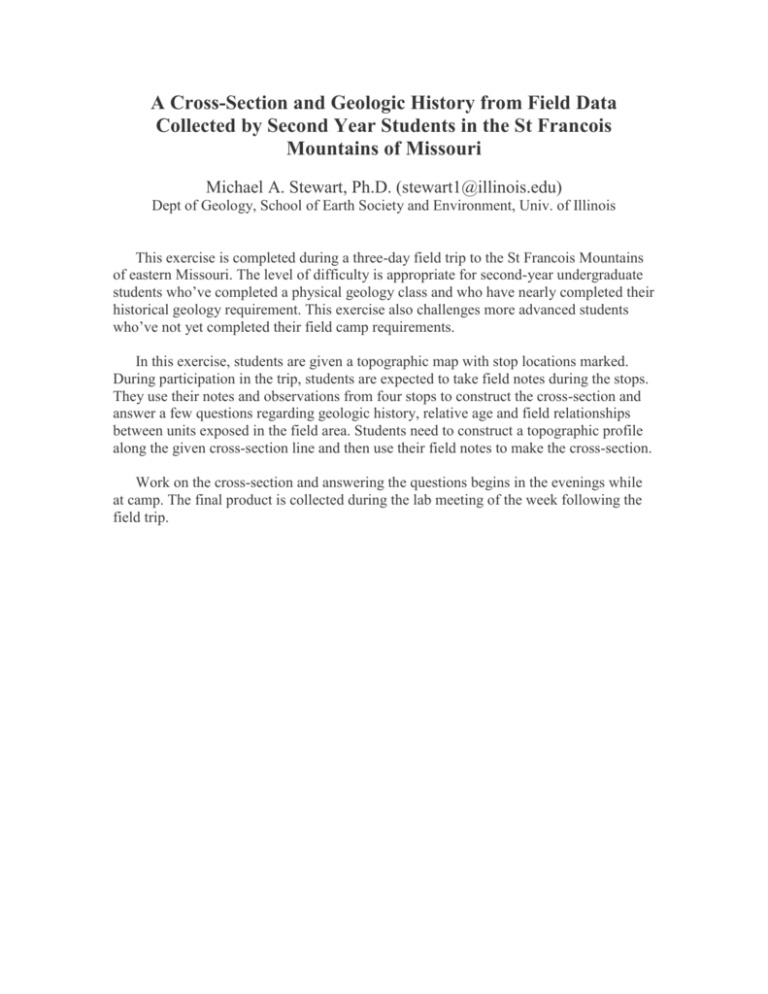
A Cross-Section and Geologic History from Field Data Collected by Second Year Students in the St Francois Mountains of Missouri Michael A. Stewart, Ph.D. (stewart1@illinois.edu) Dept of Geology, School of Earth Society and Environment, Univ. of Illinois This exercise is completed during a three-day field trip to the St Francois Mountains of eastern Missouri. The level of difficulty is appropriate for second-year undergraduate students who’ve completed a physical geology class and who have nearly completed their historical geology requirement. This exercise also challenges more advanced students who’ve not yet completed their field camp requirements. In this exercise, students are given a topographic map with stop locations marked. During participation in the trip, students are expected to take field notes during the stops. They use their notes and observations from four stops to construct the cross-section and answer a few questions regarding geologic history, relative age and field relationships between units exposed in the field area. Students need to construct a topographic profile along the given cross-section line and then use their field notes to make the cross-section. Work on the cross-section and answering the questions begins in the evenings while at camp. The final product is collected during the lab meeting of the week following the field trip. Cross-Section and Related Questions: In your handout for our field trip you received a topographic map of a portion of our field area. Included on this map are the locations of most of our planned stops for the trip and a cross-section line (A-A’-A”). You will use this map and the section line to construct a cross-section through a portion of our field area. This cross-section and your answers to the related questions below will be turned-in at our next lab meeting. Constructing the cross-section and legend: During our trip, you are expected to participate in discussions at each geology stop. You should take notes on these discussions as well as record your observations from each stop in your field book. Observations you may want to make include Lithologic descriptions of the rock-units at each stop, and sketches of the outcrops illustrating the relationships between units (cross-cutting, conformable- and unconformable-contacts etc.). You would be wise to begin this during our evenings at camp before we return to campus. Begin with a topographic profile along the cross-section line and then, answer the following questions before you begin to make the cross-section in your topographic profile. Include a legend to your cross-sections illustrating the relative ages of rock-units, the conformable (or un-conformable) contacts, and any other key information you include in your cross-section. See me at all stages for help and advise. Questions: 1. What is the vertical exaggeration of your cross-section? 2. What is the relative age of the granite outcropping at Elephant Rocks State Park compared to the ignimbrite flows exposed along highway 21? 3. What is the geologic setting/environment during deposition of the Cambrian aged Lamotte Sandstone?
